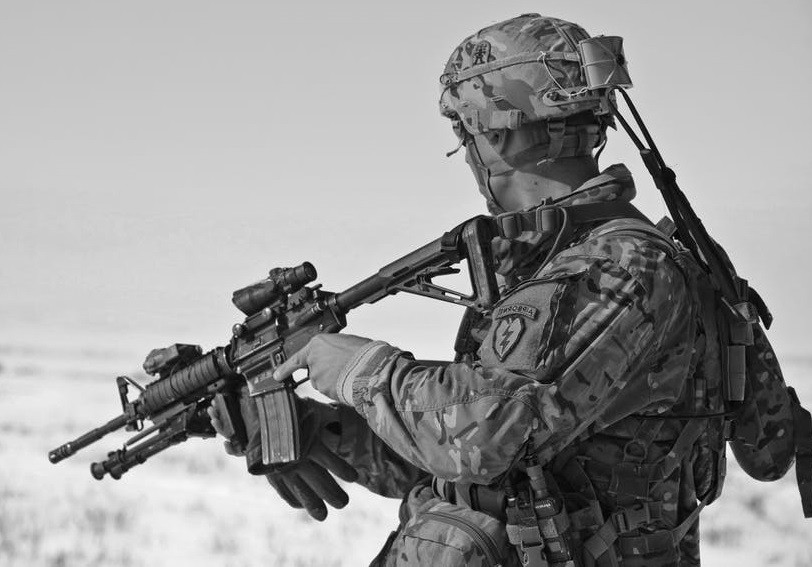What Is A Mil-Spec AR?
When talking about AR’s the term ‘Mil-Spec seems to be cropping up with increasing regularity, and is usually used onerously. With many gun owners having a military background, it’s probably best to understand what this phrase means and how it relates to AR’s in general.
“Mil Spec” is an abbreviation for military specification, implying that the thing that it is being applied to is prescribed by the military, or meet a standard that the military specifies. In the context of the AR rifle, this usually means that certain aspects of the gun or performance, testing, or dimension criteria that complies to or is approved by a certified Government inspector.
The inference is that military graded parts are the ultimate available – and it is usually the case that they are made to a very high standard – and that therefore makes the weapon seem better than rivals that are not made to a recognized standard.
Undoubtedly, there are Mil Spec AR’s around – though they are universally owned by the military, and it is unlikely that a private user is going to get their hands on one. But what makes these unit differ to a military specification, and is it possible – or even useful – to build a gun to meet this standard?
There are certain parts of an AR that the military specify their own standards purely to make the gun perform well specifically in a combat arena, which is what the Military want their AR’s to be used for. They are produced under Government contract, so there is a definition and there are currently three variation of AR that meet this:
- The M16A4 and the M4, which are built with a three-round burst-fire selector.
- The M4A1, which is a fully automatic.
All of these are classified as machine guns and no civilian transfers can take place for any machine gun manufactured after 1986. So what parts are altered to make these weapons what they are, and given that AR owners are also great at tinkering with their guns, is it possible to make one? The main parts that differ are:
Bolt Carrier Group.
This differs with regards to the weapon being either full auto or semi auto. The rear portion of each bolt carrier group is machined in a different way. The top of the rear part of the full auto BCG is identical in length to the lower lug portion of the rear of the BCG whereas the lower lugs on the semi-auto bolt carrier group are shorter. The steel used in the Mil-spec bolts are made of Carpenter 158 steel, which is a chrome-nickel alloy steel with an analysis representing the best case-hardening steel known for parts subject to heavy shock and wear. This high-quality material was specified by the original M-16 manufacturing blueprints. These changes generally are not possible for the casual AR builder to copy.
Buffer Tube.
Also known as the receiver extension, the military version is slightly smaller than the standard version, being measured at 1.148” rather than 1.168”. There is also a distinct difference in the overall quality of the parts, with the military version being machined from one piece of 7075-T6 aluminum, while the commercial version has a welded-on cap. There are also variations in length too.
Barrel. This is one of the biggest areas of change between the commercial and military AR rifles. The military version is chambered solely for 5.56×45 rounds, whereas the commercial version can accept either 5.56 NATO or .223 Remington ammo, since the military only get their rounds for Government Contractors, who all make the same thing, but commercial ammo is available from a wide variety of sources.
Furthermore, the barrel length on the military version is just 14.5 inches while the commercial one cannot legally be any shorter than 16 inches. With a twist rate of 1:7, the 14-inch barrel is designed to give two complete rotations of the bullet as it exits the muzzle. Finally, commercial AR’s are available with a variety of finishes so that you can really customize your gun, but all military AR’s come with a Parkerized finish, to help maintain the gun in the best condition regardless of the poor conditions that it is being used in. The Parkerized finish allows oil to be retained in the surface thus keeping moisture away from the working parts.
Conclusion.
There are certain other small differences between the mil spec AR and the commercial version, and these are aimed at making a mass-produced weapon that is consistent across the military, rather than purposefully keeping something away from the general public. Of course, there is the question of fully-automatic firing setting, which is illegal outside of military areas, but of great use in a combat zone.
People love their AR’s and that is born out by the huge number of customized weapons that one see’s. With all the aftermarket parts and finishes available, it’s surprising if two weapons look the same at all. And that lack of consistency is an anathema to organizations such as the military, who want to buy 10,000 units all exactly the same every purchase order. They don’t want soldiers having slightly different guns, and so there are specifications to ensure that there are no variations.

